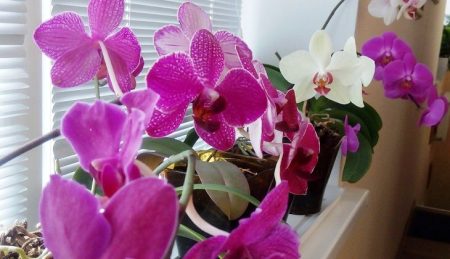 The dream of many gardeners is an orchid on the windowsill, pleasing to the eye with regular flowering. Not everyone can properly care for the plant, which is displayed on its development. Orchid requires a special approach, so the rules will be useful, compliance with which will allow you to admire the blossoming buds for a long period.
The dream of many gardeners is an orchid on the windowsill, pleasing to the eye with regular flowering. Not everyone can properly care for the plant, which is displayed on its development. Orchid requires a special approach, so the rules will be useful, compliance with which will allow you to admire the blossoming buds for a long period.
Content
The list of conditions without which the orchid will not bloom
In order for a plant to bloom, it is not enough just to water it periodically. For the normal development of orchids, appropriate conditions are needed. If you adhere to a number of requirements, the plant will bloom from 2 to 6 months. Some varieties of orchids, with proper care, are capable of year-round flowering.
The desired results can be achieved if you listen to the following recommendations:
-
- If, after the acquisition, the plant is in no hurry to release a flower arrow, it may be still young. The age at which orchids usually begin to bloom is from 1.5 to 3 years. By the number of shoots, you can determine whether the plant is ready for the appearance of buds or not. There should be 5-8 pieces.
- You can’t move the pot with an orchid without special need. In extreme cases, it is installed in the direction of the light on the same side as before. The flower negatively reacts to movement during watering and the appearance of buds.
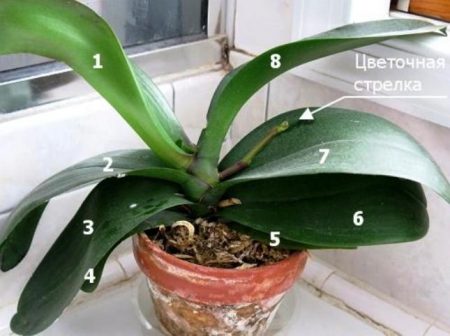
- Since orchids participate in photosynthesis both leaves and roots, it is recommended to use transparent or translucent plastic containers with many drainage holes for planting the plant. Thanks to such pots, full lighting and ventilation of the root system is provided, and plastic protects the orchid from sudden temperature jumps.
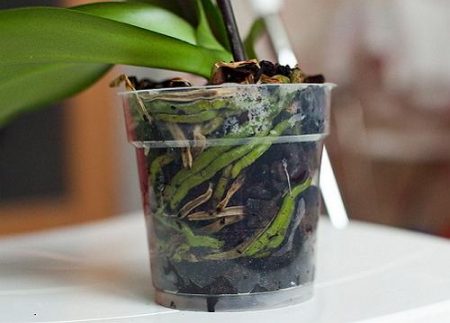
It is allowed to use ceramic pots with many holes, without which the orchid will not grow normally.
The tank should not have corrugated walls, otherwise the roots simply grow to them. Sharp edges are not allowed to avoid unwanted injury to the root system.
- Flowering will be impossible without the organization of proper lighting. Orchids should receive light for 10-12 hours a day. However, it is important to ensure that the light is scattered. The plant does not tolerate direct sunlight.
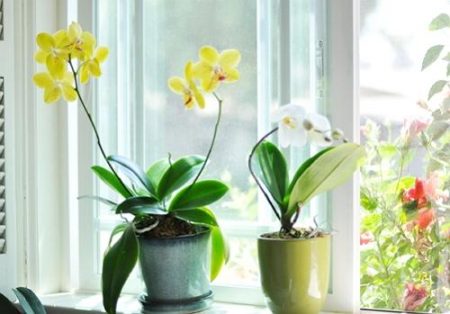
In the autumn-winter period, phytolamps will be needed - lighting devices with which light is supplied without drying the air. A great place for an orchid at this time is the south and southeast side of the house.
If the plant is not lightened, especially when the peduncle appears, its development will slow down or completely stop. Only the tip of the peduncle is allowed, the main thing is to avoid overheating of the orchid.
- Abundant and prolonged flowering is possible due to a small difference in temperature during the day and night. In order for the buds to appear and blossom, with the onset of night, the temperature should drop no lower than 4-6 degrees.
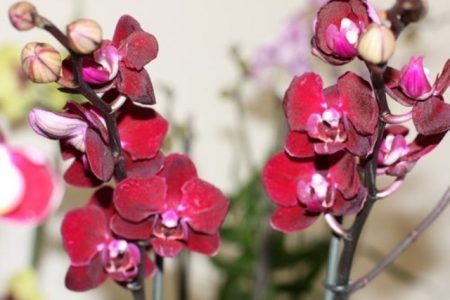
To comply with this condition, orchids can be exposed to the open air from the end of spring to the beginning of autumn. The rest of the time it is necessary to arrange the ventilation of the room. The only thing is to prevent the plant from being in a draft.
It is worth considering that the temperature will depend on certain varieties of orchids.For example, phalaenopsis is heat-loving plants, so in the summer they will feel comfortable at a temperature of 15 to 32 degrees, and in the winter - from 15 to 18.
- One of the components of competent care is proper watering. This should only be done after the soil dries. To determine when a plant needs to be watered, you need to look at its roots. If they are green, there is enough moisture. A light gray shade of the roots indicates the plant's need for water.
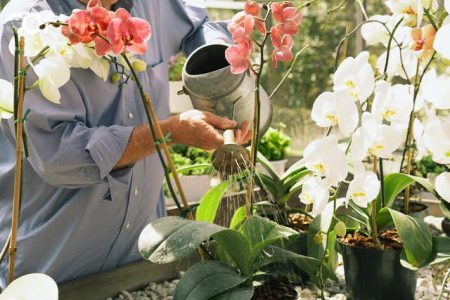
When the flowering is over, you will need less watering for about a month.
It is important to take care of the most natural conditions for the orchid, because only in this way flower stalks will regularly appear on it. If flowering begins, watering should be intense before it ends. With the onset of the dormant period, the plant is watered after 10-12 days.
You can water it in two ways - using a watering can or using a container filled with warm water, in which for 10 minutes a pot of orchid is placed.
- Equally important is humidity. At low rates (below 60%), the orchid stops growing or premature drying of flowers and buds is observed. This can be prevented with a plate of water, which is placed next to the plant. When the heating is turned on in the house and the air becomes too dry, the orchid must be sprayed.
- Particular attention is paid to the selection of fertilizers. The best option is compounds containing phosphorus and potassium. Their use will contribute to a more active formation of flower buds, while the flowers will turn out healthy and strong. It is worthwhile to refrain from applying nitrogen-based dressing, as it will slow down the appearance of peduncles.
- According to experienced gardeners, sometimes even with the exact observance of all conditions, an orchid can remain without a peduncle for a long time. In this case, the plant does not hurt a little stress. If the orchid receives proper care, but does not want to start the arrow, then it feels too good. Accordingly, all the forces go to the formation of leaves.
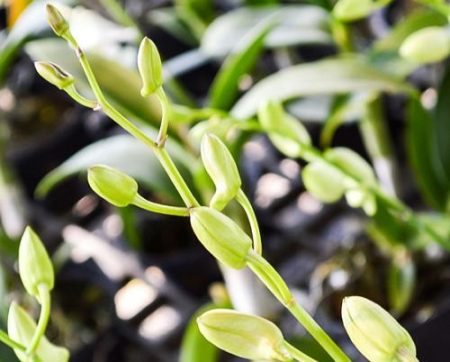
To direct the development of the plant in the right direction, the amount of watering is reduced or the pot is moved to another place with a lower temperature.
Features of care at rest
When flowering ends, the stage begins during which the orchid builds strength. She needs them in order to start the arrow again at a certain moment. Therefore, it is provided:
- timely watering;
- high level of humidity;
- good lighting;
- regular preventive measures aimed at protecting plants from various diseases.
Top dressing is carried out less often than usual, and fertilizers are used in a smaller volume.
The rest period is an ideal time for an orchid transplant. It is possible to understand that a plant needs a transplant, by roots sticking out of drainage holes or by drying the soil too quickly after watering. Usually you have to do this kind of work once every 2-3 years. Doing this more often does not make sense.
Can orchids be cut to make bouquets?
Orchids, like other flowering plants, will look great in the form of a bouquet. However, far from always cut flowers can retain their original attractiveness for a long time. Some types of orchids can be in the vase for about a month, but there are those that fade literally after an hour or two.
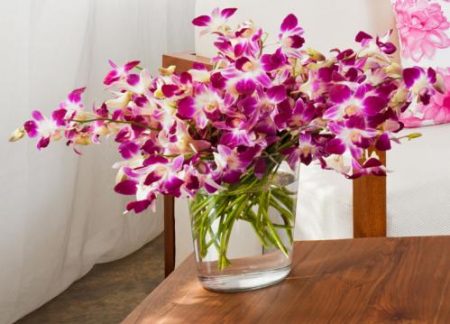
Among the representatives of the first group are:
- papiopedilums;
- cymbidiums;
- phalaenopsis.
When buying a bouquet of orchids, you should look at the petals and sepals. If they are tough and look like they were waxed, you can safely carry the flowers home.They will long delight with their beauty.
Care for a bouquet of orchids
It’s not enough just to buy a good bouquet and put it in a vase. In order for the flowers to stand for as long as possible, you will need to follow certain rules:
- Slices purchased from a bouquet purchased at a store are mandatory. The stems are cut obliquely at an angle of 45 degrees. It is better to perform such actions under running water, and this is done every 2-3 days, otherwise the flowers will quickly fade.
- You cannot take tap water for such demanding colors. Only soft and clear water is suitable. This is filtered or boiled. In addition, fresh water is added to the vase as needed.
- Orchids are very sensitive to too low and too high temperature indicators, it does not matter if the flower is cut or grows in a pot on the windowsill. It is also important not to allow orchids to be in drafts or under the scorching sun.
Caring for orchids is not as difficult as it seems at first glance. If you follow the above recommendations exactly, the plant will bloom regularly, which will make the atmosphere in the house more comfortable.

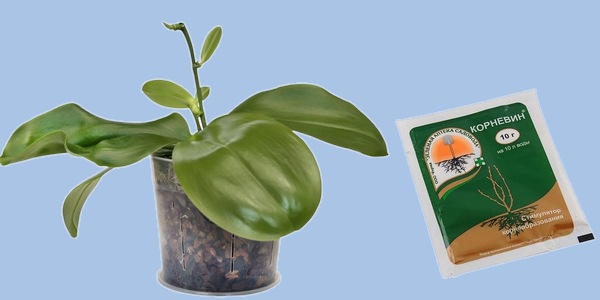
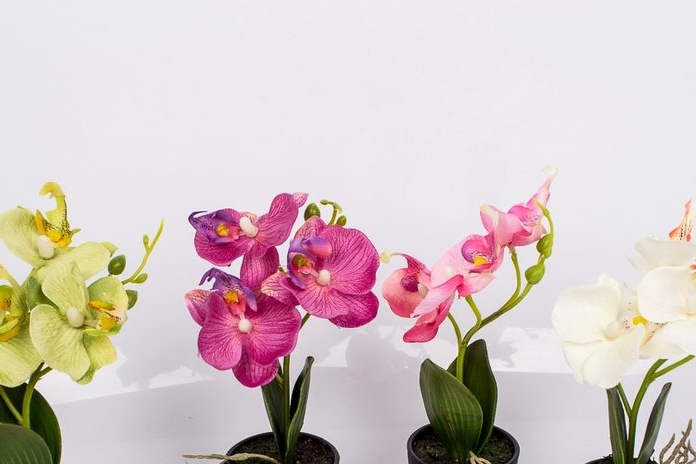
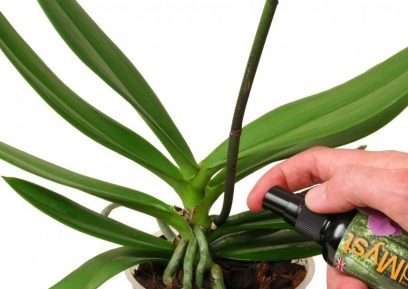
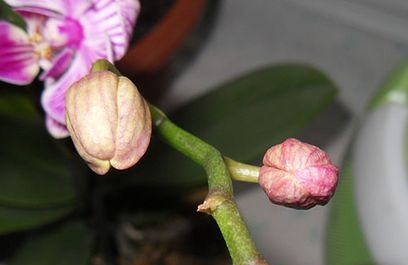 Reasons why orchids fall flowers and what to do
Reasons why orchids fall flowers and what to do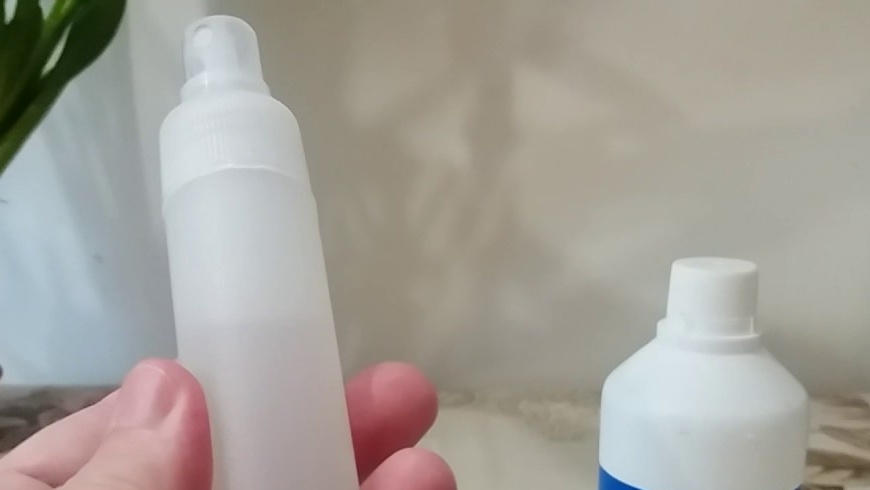 How to use hydrogen peroxide for orchids and why
How to use hydrogen peroxide for orchids and why Midges are wound up in the orchid: effective ways to get rid
Midges are wound up in the orchid: effective ways to get rid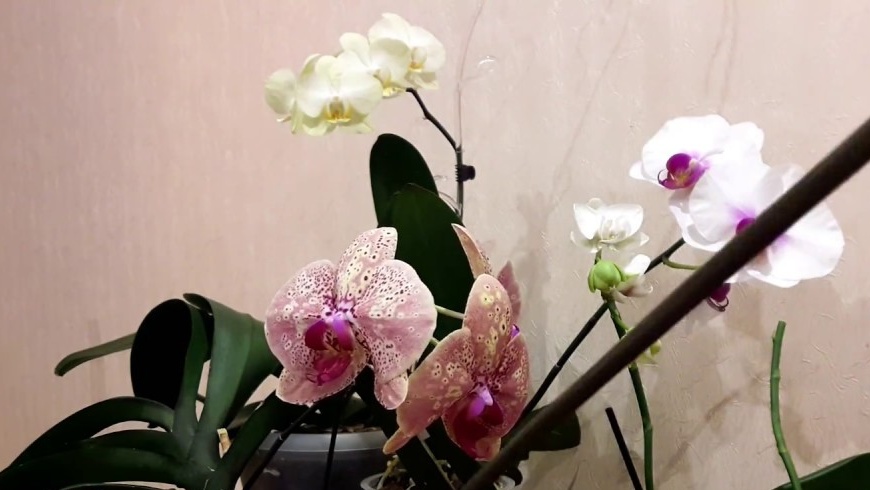 Is it possible to transplant an orchid during flowering
Is it possible to transplant an orchid during flowering